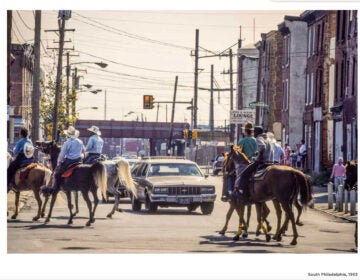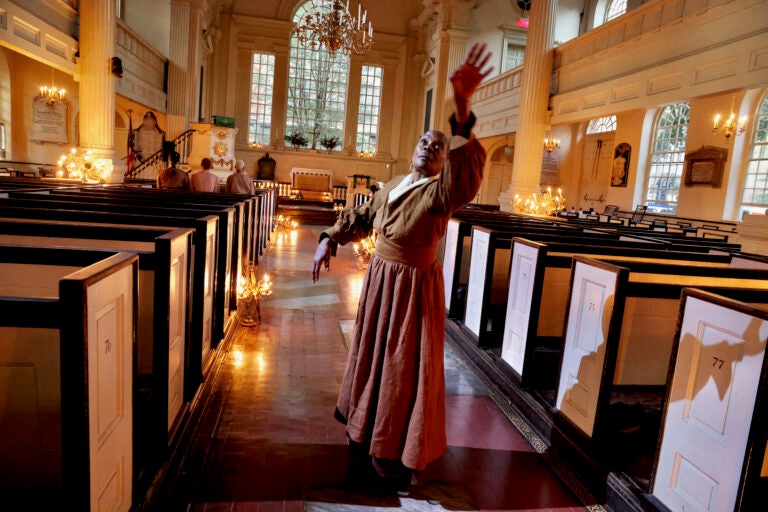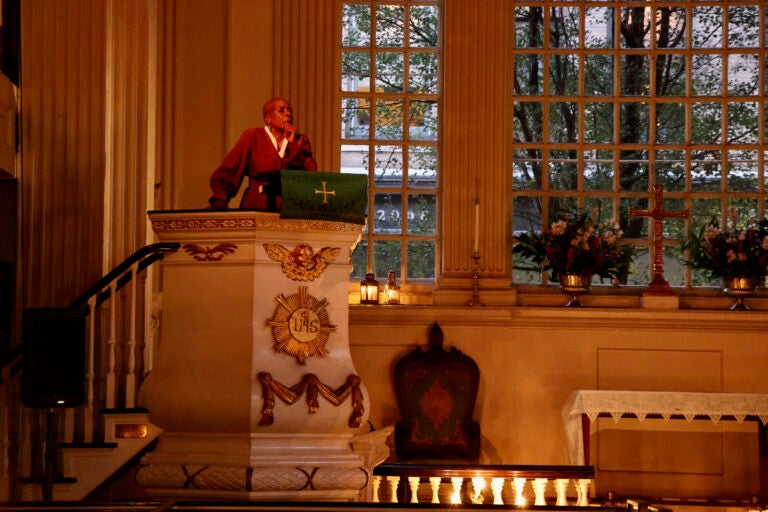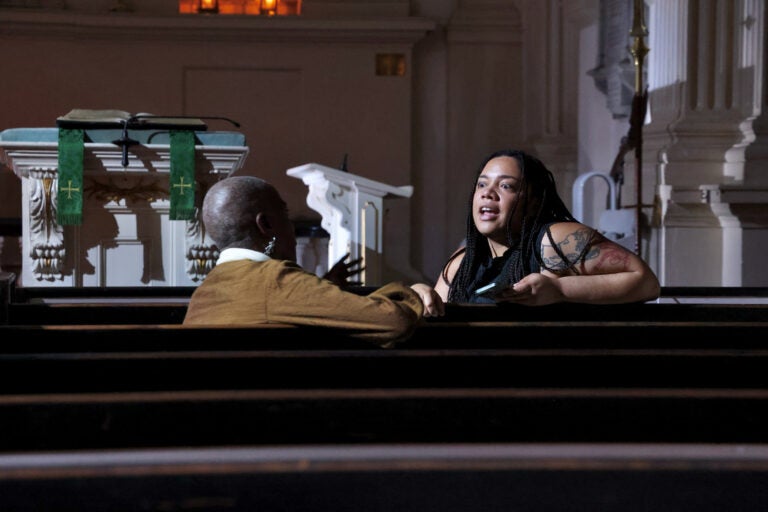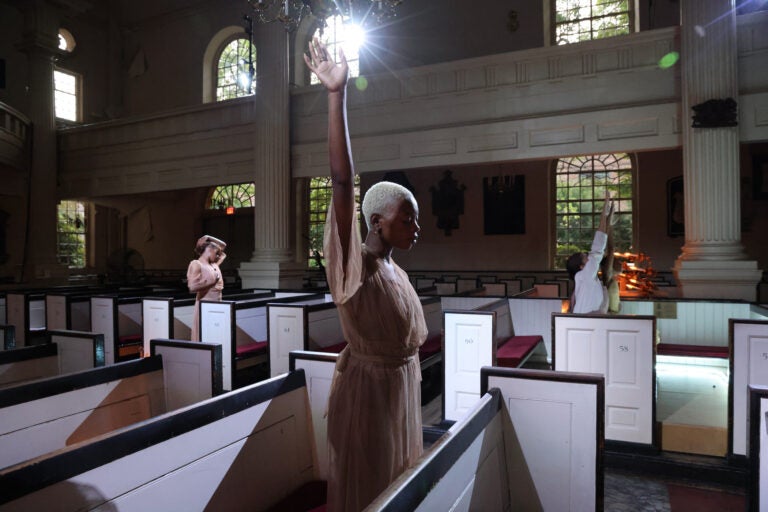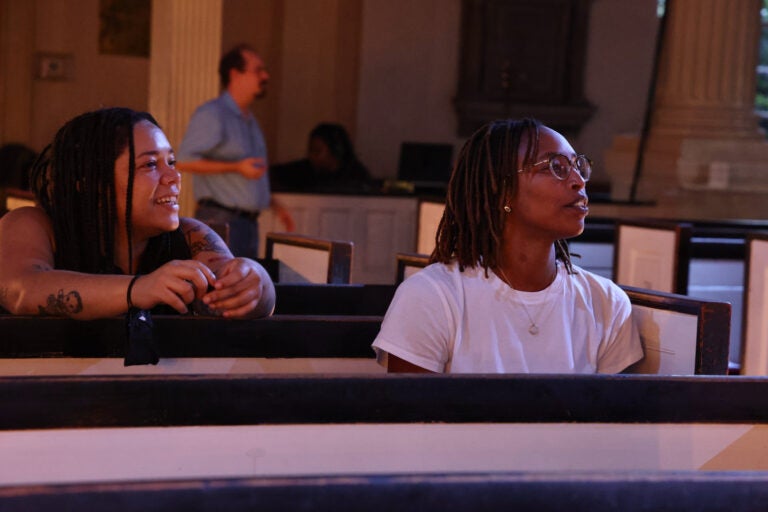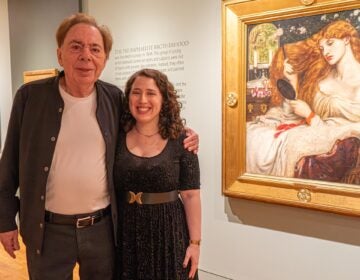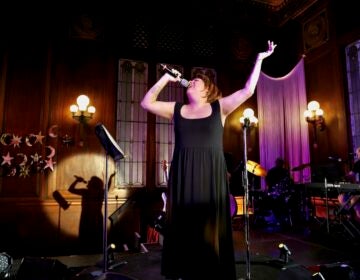Historic Black Philadelphia brought back to life in ‘On Buried Ground’
A dance and theater piece imagines the lives of 18th and 19th century Black figures buried at Christ Church.
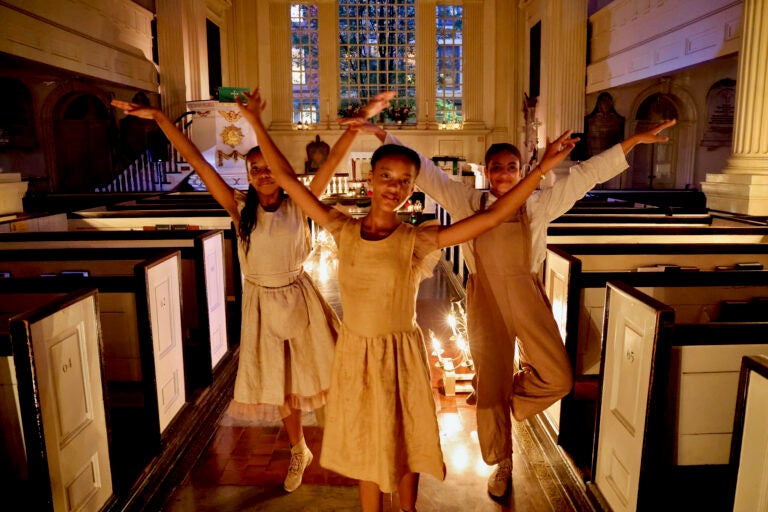
Young dancers portray enslaved children in the dance-theater production, ''On Buried Ground.'' The performance takes place at both Christ Chuch and Christ Church Burial Ground in Old City. (Emma Lee/WHYY)
From Philly and the Pa. suburbs to South Jersey and Delaware, what would you like WHYY News to cover? Let us know!
In the late 18th and early 19th centuries, Philadelphia had the largest population of free Black residents of any city in America. But due to an unusual circumstance of historical record-keeping, many of their graves are unidentified.
Unless they belonged to a prominent congregation, many free Black decedents were likely buried in a Potter’s Field now known as Washington Square Park. Records at the historic Christ Church show free Black residents petitioning Governor William Moore in 1782 to erect a fence on what was then known as Congo Square to protect their dead from grave robbers.
On the other hand, enslaved people were typically buried by the church where their owners were parishioners, and duly recorded.
Christ Church has been digging into its burial records for creative inspiration, first with an exhibition pairing historic documents with original artwork and performance monologues, “Groundings.” That exhibition is being augmented by a dance and theater performance, “On Buried Ground,” which is opening during this fall’s Fringe Festival.
“On Buried Ground” straddles two locations, at Christ Church on 2nd Street and at its historic cemetery on 5th Street, where tourists often toss pennies on the gravestone of Benjamin Franklin. Audiences assemble at the cemetery for the first part, take an intermission in the exhibition at Christ Church Neighborhood House, and then walk across the cobblestone street to the historic Christ Church for the second part.
“It’s like the space is talking to us,” said choreographer Shayla-Vie Jenkins.
“And we’re trying to talk back,” said director Nia Benjamin. “There are people buried inside Christ Church. There are people’s energies that, maybe it’s just my personal belief, are still in that space.”
“It’s our desire of artists, when you hear these names you’re seeing people embody them but also feel the energy of these people re-emerging, re-forming and re-inhabiting the spaces that were moving through,” they said.
“On Buried Ground” portrays Alice of Dunk’s Ferry, a woman born into slavery in Philadelphia in, supposedly, 1686 to parents from Barbados. She likely led an extraordinarily long life, perhaps 116 years old, and was unusually well-documented for an enslaved person.
Due to her detailed memory of people and historical facts from the first years of the city of Philadelphia, she was relied upon as an oral historian. She was owned by Samual Carpenter, a deputy governor of Pennsylvania, a founder of Christ Church and a personal friend of William Penn.
“She lit William Penn’s pipe, which is really fun,” said playwright Rayne, formerly known as Angela Bey. “A very trusted member of the community. She also rode on horseback to Christ Church until she was 95 years old. You can imagine this beautiful woman of stature riding on horseback to services.”
For the performance, Alice is portrayed by Rhonda Moore, an elder of dance in her own right who, in 1983, was a founding member of the influential ensemble Bill T. Jones/Arnie Zane Dance Company. For 15 years, she has fostered young dancers as an instructor at Temple University.
In “On Buried Ground,” Moore gives a voice to Alice as she never was able to in life. She delivers a fiery sermon from Christ Church’s elevated podium on the spirit of the Black Philadelphian.
“If she could have dominion over this, what would a Church sermon from Alice look like and feel like?” Benjamin said.
“In this church, my church, this thing called love is not a spectacle,” Moore says, as Alice.
“In this church, my church, angels take graveyard shifts, bind their spirits to the fences to keep love in,” she continues.
“In Philadelphia, the Free North, we haunt the Earth,” she proclaims. “Ponder our futures.”
Alice is joined by other, lesser-known spirits. Four children come scampering down from Christ Church’s balcony seating. They are Violet, William, Charles and Sharpers, known to have been buried in the Christ Church cemetery. Other than the fact that they were born enslaved and died young, their lives do not exist in the historical record.
In “On Buried Ground,” the children are performed by child dancers who seem to be having fun with it. Benjamin made sure the deceased children were seen as happy, curious and joyful.
“We’re trying to approach it from like the reality of the time: I was 10 and enslaved. What does it mean to dream from that place, to play from that place, to forge relationships from that place?” Benjamin said.
“There’s a lot of joy in the performance,” they said. “We had to do that, honestly, out of self-preservation as artists, so that we don’t get dragged down by the realities of the history that we’re trying to confront.”
In the accompanying “Groundings” exhibition, the children are imagined as adults. Rayne imagined what their lives might have been had they grown older, and asked child actors to perform monologues. The audio performances can be heard through headphones in Christ Church Neighborhood House.
“On Buried Ground” runs from September 4 through 14.

Get daily updates from WHYY News!
WHYY is your source for fact-based, in-depth journalism and information. As a nonprofit organization, we rely on financial support from readers like you. Please give today.



